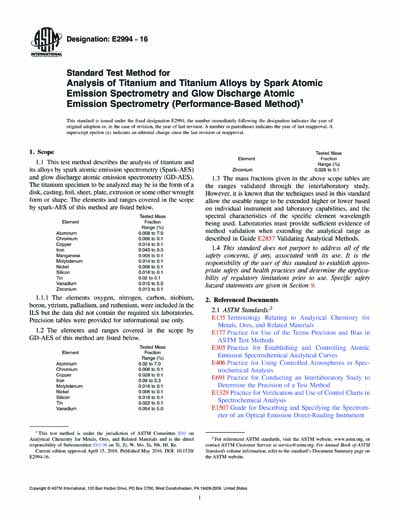Most recent
ASTM E2994-16
Standard Test Method for Analysis of Titanium and Titanium Alloys by Spark Atomic Emission Spectrometry and Glow Discharge Atomic Emission Spectrometry (Performance-Based Method)
1.1 This test method describes the analysis of titanium and its alloys by spark atomic emission spectrometry (Spark-AES) and glow discharge atomic emission spectrometry (GD-AES). The titanium specimen to be analyzed may be in the form of a disk, casting, foil, sheet, plate, extrusion or some other wrought form or shape. The elements and ranges covered in the scope by spark-AES of this method are listed below.
1.2 The elements and ranges covered in the scope by GD-AES of this method are listed below.
1.3 The mass fractions given in the above scope tables are the ranges validated through the interlaboratory study. However, it is known that the techniques used in this standard allow the useable range to be extended higher or lower based on individual instrument and laboratory capabilities, and the spectral characteristics of the specific element wavelength being used. Laboratories must provide sufficient evidence of method validation when extending the analytical range as described in Guide E2857 Validating Analytical Methods.
1.4 This standard does not purport to address all of the safety concerns, if any, associated with its use. It is the responsibility of the user of this standard to establish appropriate safety and health practices and determine the applicability of regulatory limitations prior to use. Specific safety hazard statements are given in Section 9.
Content Provider
ASTM International [astm]






